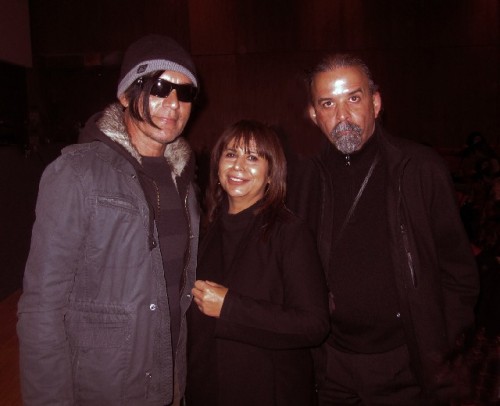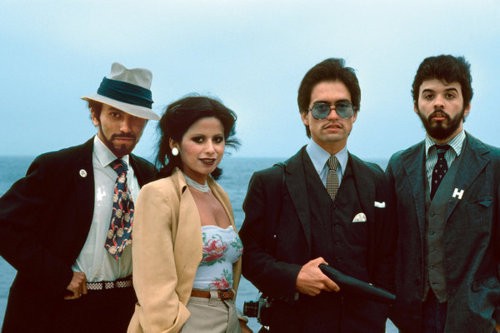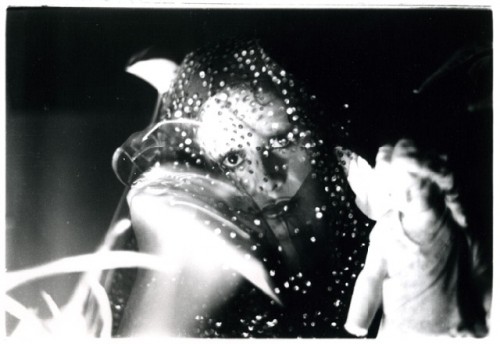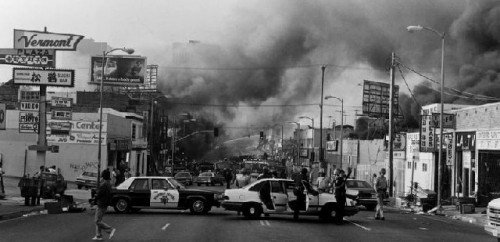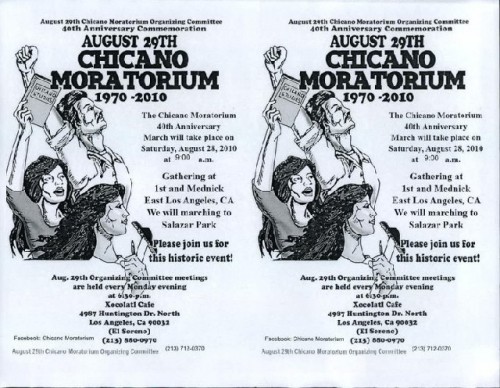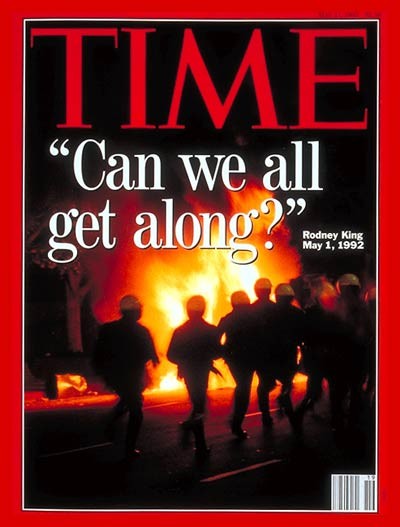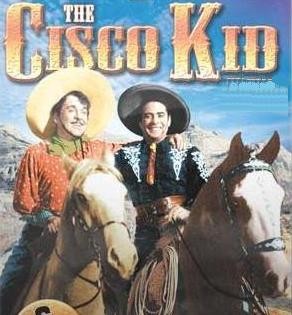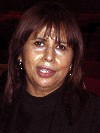Patssi Valdez of Asco Part One
Bi-Coastal Exhibition at Williams College Museum of Art.
By: Patssi Valdez and Charles Giuliano - Mar 11, 2012
After high school in East LA four Chicano friends- Harry Gamboa, Jr,, Gronk, Willie F. Herron III, and Patssi Valdez- hung out and made conceptual, graphic and performance art together. The initial reactions of their community were expressed by the Spanish work Asco- disgust, vomit, revulsion. They liked the word which stuck with them. It was used for the movement which functioned under the art world radar. The bi-coastal exhibition Asco Elite of the Obscure a Retrospective 1972-1987 was organized by the co-curators C. Ondine Chavoya, Associate Professor of Art and Latina/o Studies at Williams College, and Rita Gonzalez, Associate Curator of Contemporary Art at the Los Angeles County Museum of Art.
During a seminar based on the exhibition at Williams College we met Patssi Valdez. Later we spoke with her at length by phone from her home in Los Angeles. This first segment of the dialogue focuses on her experiences growing up in East La in a climate of anti-war demonstrations, gangs, and police brutality. From childhood she had a compelling urge to make art. Seeking out like minded friends led to the formation of the activist art group Asco.
Charles Giuliano Let’s start with high school when you met the other artists.
Patssi Valdez I went to Garfield High School in East LA. I was in the 10th grade when the walkouts and big demonstrations happened. It was a political upheaval in response to the Vietnam War. And the deplorable conditions in the high school with outdated books. Teachers that really weren’t up to par. The students walked out in protest. It was around 1968. I was a kid in 10th grade. I was trying to grasp what was going on. It was my first year of high school so you had to catch it really quickly to figure out what was going on. I knew that it was important to walk out even though I was trying to figure out all the issues surrounding the walkout.
CG During the Williams symposium Harry Gamboa talked about the riots in LA. Were you involved?
PV Yes I was. I’m not exact on the dates but I think it was 1971. (1970 - Chicano Moratorium Riot, August 29, Los Angeles, California) There was the big Moratorium that took place on Whittier Boulevard in East Los Angeles. It was about the Vietnam War and a lot of other issues. I was working in the family business at the time. Willie (Herron) picked me up from work. I was a hairdresser. A part time hairdresser in the family business in order to make money to create my art. I never looked at it as a full time career. It was in order to get some money to do what I loved.
They picked me up and we went to the Moratorium. I had to do it secretly because if my mother found out I would be in deep trouble. I think I changed in the car into something very dramatic. Then we went to demonstration and I walked in the Moratorium.
They drove me back to work and thank God I wasn’t there when all hell broke loose. The tear gassing and the violence took place. What I understand and witnessed later there was a lot of police presence during the peaceful demonstration. Something happened at a liquor store. Some minor offense. I’m not too clear on the details but it was the opportunity that the cops needed to get rid of the people who were demonstrating. There were Moms, Dads, Grandparents, Kids, Babies. It was peaceful. I ended up hearing it on the radio. I didn’t witness it first hand because I was safe at work. My home was right near that bar where they killed that journalist.
(Rubén Salazar, March 3, 1928 – August 29, 1970, was a Mexican-American journalist killed by a Los Angeles County Sheriff's deputy during the National Chicano Moratorium March against the Vietnam War on August 29, 1970 in East Los Angeles. During the 1970s, his killing was often cited as a symbol of unjust treatment of Chicanos by law enforcement. Salazar was the first Mexican-American journalist to cover the Chicano community from the mainstream media)
I tried to get home. Willie picked me up from work again. We couldn’t get to my house because it was barricaded. My mother is not in any way political. She said that people were climbing over the fence. They were screaming. They couldn’t see. She was helping them with wet towels to clean their eyes. The other thing I do know there was shooting in the streets. It was unbelievable. Shooting. Tear gas. Beatings. It was a full blown riot.
(The rally was broken up by local police, who said that they had gotten reports that a nearby liquor store was being robbed. They chased the "suspects" into the park, and declared the gathering of thousands an illegal assembly. Monitors and activists resisted the attack, but eventually people were herded back to the march route, Whittier Boulevard. Stores went up in smoke, scores were injured, more than 150 were arrested and four were killed, including Gustav Montag, Lyn Ward, José Diaz, and journalist Rubén Salazar, news director of the local Spanish television station and columnist for the Los Angeles Times)
CG I’m looking at the Harry Gamboa photograph of an event on a traffic island in busy Whittier Boulevard “First Supper (After a Major Riot)” 1974.
PV We did that after the event. It was after. We didn’t do that piece immediately. It’s been more than 30 years so it’s hard for me to remember. You couldn’t do anything right after the riots. Everything was in disarray. There’s no way we could have done that immediately following the riot. After the riot Whittier Boulevard was a nightmare. Most of the businesses moved out. Stores were boarded up for quite awhile. So there was no way you could do that immediately after.
I lived two blocks from Whittier Boulevard. That scene were we are having supper, that’s about two blocks from my house. So a lot of the stuff happened around my neighborhood. There was a certain band of blocks which were the hip in place. Where the cruising took place. Where the nice stores were. So I lived two blocks from the hippest part of East LA. I’ll say the hippest but I’m not sure if that’s the proper word. It had the cool stores like Judy’s Clothing Store which I think is still going. It had really hip clothes. We had gorgeous men’s shoes. We had Woolworth’s. Thrifty’s. Town and Country an upscale women’s store. So the high end better stores were off Whittier Boulevard in the heart of East LA.
CG Were your parents born in Mexico?
PV No. My mother was born in LA and my grandparents were born in Mexico.
CG When did they come here?
PV I’ve tried to get the story from my Mom. Either she doesn’t remember or she has blocked it out. I can’t seem to get any answers out of my mom. She’s 83 now.
CG Amalia (Mesa-Bains) the artist and keynote speaker during the Williams symposium talked about how her family came during the 1917 Mexican Revolution. Settling near San Francisco.
PV Amalia is ten years my senior so they must have come later. I can’t give you dates but I remember my Mom saying that they worked on a farm here in El Monte. I’m barely starting to hear her stories now. My mother was never around because she worked all the time. I didn’t have time with my Mom because she was always working.
CG Is that why you hung out with the boys?
PV No. The reason I hung out with the guys was because there were no women in high school who were interested in art making. I didn’t have one friend in high school who even thought about art at all. I would see Gronk in the neighborhood sketching. My Mom would be driving around. I would see this strange guy. I would look and say “Who’s that?” He was doing what I loved. He was out sketching and I had grand dreams of being a great artist from when I was a kid. I met Gronk through my sister. I was about 16 and I met Willie in high school.
But to go back to my family. I was what they called a latch key kid. I realize now that the reason I don’t have children is because I raised my little sister. She was four years younger than me. I would stay home and clean. Try to make something for her to eat while my Mom was the bread winner. I just thought later, ah, been there done that.
CG So your Mom was a single parent. Did you know your father?
PV Oh yes. He left or was asked to leave when I was about seven. It was very dysfunctional. He was an alcoholic. He was very ill. In and out of hospitals. He had to go. It was either he go or I have a nervous breakdown. But I do have some fond memories of him in the early years of my life.
CG When and how did your interest in art develop?
PV I’m going to say this. I really believe that art was in my genetic makeup. I’ve loved art since I was a little tot. A five year old girl. I was in an art show when I was in elementary school. I was picked to put a piece of work on the wall. We had like a little opening at school. I tell this tragic story because I was a very shy, introverted child. Extremely shy. I was excited about the piece being hung on the wall for open house. But I got a lot of attention and I couldn’t handle it. When the teacher gave us our pieces to take home I remember I threw it in the trash. I couldn’t handle all the attention. It’s quite tragic that I did that but I had mixed feelings. I loved doing it but then I couldn’t handle the attention.
I had grand dreams. Number one. Getting out of that neighborhood. I needed to get out of there. I didn’t want to be a gang banger. I wanted to make something of my life. I wanted to be in history books.
CG Now you are.
PV I know. It’s so ironic. Thank God for art making because it did literally save my life. In many ways. I want to say it’s in my DNA because I come from a family of artistic people who were not able to practice full time. My aunt is a painter and sculptor. She’s a mom so she did it in her spare time. Two uncles were photographers. I’ve been photographed since I was a five year old. Maybe even younger. I’ve been posing since I was maybe four. Maybe three. Maybe younger. Maybe one. When I grew up I was always being photographed.
CG If you were so shy how did that impact posing for the camera?
PV I think with my dad and the alcohol that’s when I became very introverted. When you’re a child you’re free and open. When the pain came and I saw the dysfunction that’s when I started to close down.
During the Asco years when I was being photographed, well, in my mind I was so fed up with all the negative stereotypes of Mexicans which were so old fashioned and backward that I would look at those things and go, this is a huge part of the picture of this thing. Images in the newspapers, images on television. Whenever we are on television or in the papers we’re killing somebody or we’re down and out. It’s always something negative.
CG On television I grew up with the Cisco Kid and Pancho (1950-1956). So that was my first experience of Chicano culture.
PV See? Anyway it just seemed that the images were stupid, lazy and unattractive.
CG During the conference you stated that you were not involved with Chicano culture and didn’t like salsa or the music. Was that a part of your rejection of those stereotypes? You described yourself as a Mexican hippie.
PV No. I just didn’t grow up with that. I didn’t grow up with that kind of music. My Mom was always at work so I could listen to any kind of music I wanted to. I remember that I grew up with Canned Heat. Frank Zappa I loved.
CG So you were a hippie.
PV I was. It’s ironic that I was too young to drive to Woodstock. I was really pissed because I was in high school and couldn’t go. I would have done anything to go to Woodstock.
CG I went to Woodstock.
PV How lucky. I was stuck in East LA. No car. I was at that awkward age.
CG No money.
PV No I always had money. Not a lot of money but I always had money. I went to beauty school, cosmetology, when I was in the 12th grade. So when I graduated from high school I already had a license. At 18 I could earn a living and I definitely was not going to be penniless. I couldn’t stand it. I needed to have money. I had a beautiful sports car. I liked nice things so I worked to get them.
CG You went to art school.
PV I went to art school ten years after making art. When I left Asco there was all this stuff that they threw her out. Da, da, da. No. I left because I wanted to go to art school since I was 18-19. My grades were not the greatest. I was an average student. We had enough money that I couldn’t get any grants for school. They expected your parents to pay for school but we didn’t have enough money to do that. So I was sort of stuck in the middle. Not poor enough and not rich enough.
After being in Asco I decided it was time to go to art school. It was the 1980s. I was dating a UCLA student and I was complaining “I want to go to art school. I want to go to art school.” He said “Look. You’re a citizen. You have rights I don’t have.” I didn’t know he wasn’t a citizen. He had a green card. He said “I don’t want to hear it anymore. Go get those darned papers, bring them back, and I’ll help you fill them out.” I thought oh, he kicked me into shape. So I filled out the papers and started school like within a month.
CG How did Asco get together and started making art? Was anyone paying attention to what you were doing?
PV You mean the community?
CG When you were walking down the street in the performance pieces was anyone interacting with you? What was the response? Was there any media coverage? Did you get in trouble?
PV I was dating Willie in high school. Harry was dating my best friend. Gronk was a friend of my sister who I met at Caca Roaches Have No Friends (a 1969 play written by Gronk). I finally got to meet the guy who was drawing in the streets and we had an immediate connection. We became a part of that play. Once we met that was it. We became friends. He became my mentor. When I went to East LA College after high school Gronk was always hanging around there. Whenever I had an issue something in regard to my art making I could go to him. We would have a dialogue. I found somebody I could talk to. It’s been like that ever since. To this day. We are very close friends.
CG He sounds like a mysterious character.
PV He’s been a mysterious character. I’ve been his friend all these years. There are certain things I won’t ask him. What’s his real name? When was he born? I just won’t ask because it’s none of my business. Unless he wants to tell me. I’m not going to pry. Because there are other more important things I care about. He has a certain persona and yeah there is a mysterious quality about him.
CG Can you describe that persona?
PV Ok. There’s this whole bunch of people. Gronk is going to have a party. We would all go to the party. These are not the Asco people. This was another group of young people. He would be at this party and Gronk would look so amazing. The long velvet coats and fish net stockings. The torn jeans. The Afro. The big hair. The jeweled vest. It was just cool to look at him. We’d be at the party sort of waiting for him and he would never show up.
CG Where’s Gronk?
PV Where’s Gronk? The party would be almost over. We would get a message or a call or something and we would learn, oh, he had to take a trip somewhere. He’s not coming.
CG Did you read my article? That’s what I said “Where’s Gronk?”
PV I did. It was really good. I haven’t done it but I need to text Gronk. He wasn’t there (Williams) but he probably got more coverage, even in your article, than any of us who were there. He didn’t even have to be there and he was still the star.
CG Is it fair to say that he was the inspiration for Asco?
PV No. It’s not fair. We were all equal partners.
CG Describe the dynamic. Who came up with the ideas?
PV We all did. I can’t separate it. There was a collaboration between us. So it was never like anyone was in charge. Never. If that was the case I would have left the group. I became an artist for total freedom. Of expression. And to find my voice. So if you were going to tell me what I do I would leave. That’s why Harry made a comment “Try to tell them what to do? Forget it.” We would get together. I would draw something. Gronk would draw something. We would have a dialogue about what was going on in the neighborhood. There were things that happened to us. There were things that were of concern to us. So it would be a dialogue back and forth. And yes, of course, we all had different strengths and weaknesses in the group. Harry was really good with words. Still is. Gronk was brilliant in. I just always knew that Gronk was extremely brilliant. Willie had technical ability. I had other assets, other things going on with myself.
CG What were your assets? What did you bring to the group?
PV Well I’ve been told that if it wasn’t for my presence the group would have been pretty boring.
CG You’re easy on the eyes Patssi. You’re a super star.
PV I was easy on the eyes but I also set out to reinvent myself. I played these different roles for the camera. Looking into that lens as though I were looking at the world. It was almost like a Madonna Truth or Dare. I had that feeling inside me like I dare you.
CG How much of that was LA and Hollywood?
PV I don’t think it was Hollywood. That feeling came from a lot of anger. Distrust. Being fed up. Not feeling like we were invisible. Trying to find my voice. It came from a very personal place. As well as from a very social and political place.
CG What were you angry about? At some point later you said that you got tired of being pissed off? What was that about?
PV Well. You grow up being poor. You grow up being harassed by the cops. Constantly. I have been pulled over by the cops I don’t know how many times. It was ridiculous. Are you kidding. When I saw Rodney King I thought finally somebody has documented that. We had been dealing with that for years. You could say it. But did you have proof. So that was like, oh, finally. I remember one time Gronk and I were at a party. We dressed very extreme. I said to Gronk let’s leave. I had a little VW so I said “Let’s get out of here for awhile.” We were driving around the neighborhood and we got pulled over by the cops. The line was always “The light on your license plate is out.” We got out of the car. They humiliated us. It was just a lot of humiliation. They used a lot of fear tactics. It happened a lot.
CG Was it racist?
PV Definitely.
Review of the exhibition
Part Two

